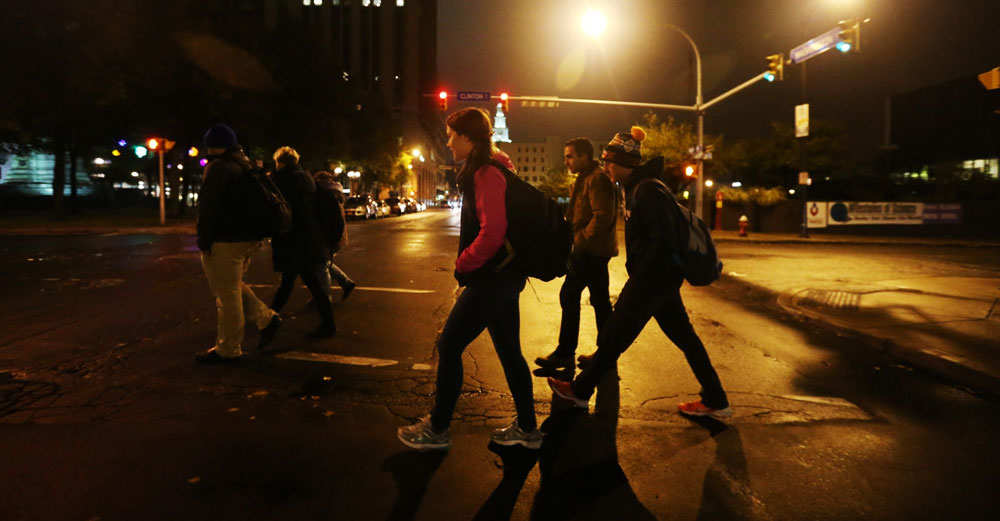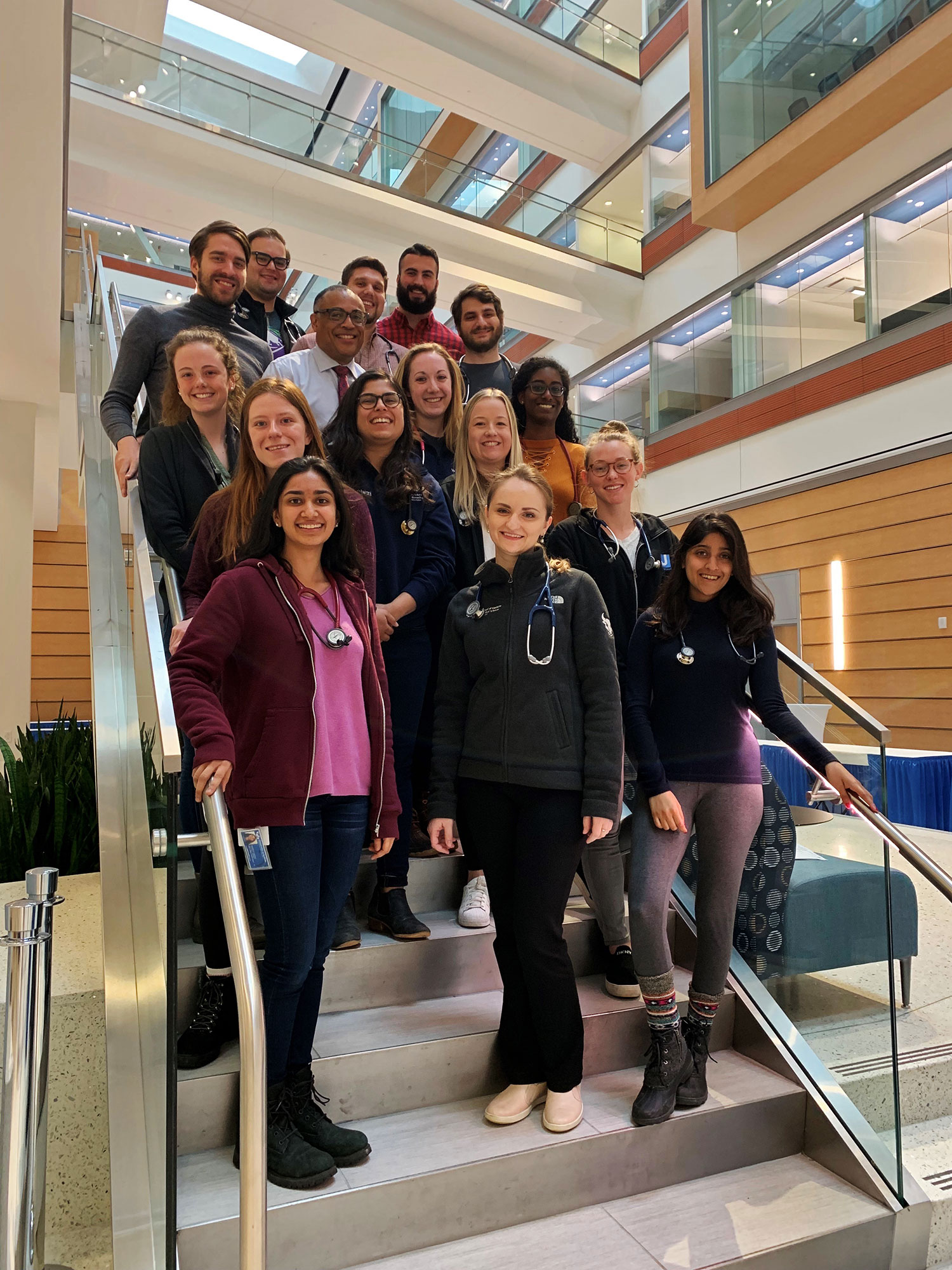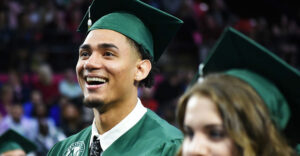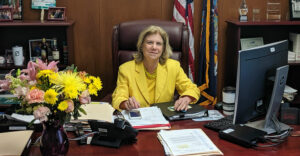
They suffer from foot problems, depression and infections. Many are sleep deprived. Others have swelling in their legs. Some simply need ibuprofen to cure a headache. Others want food, clean clothes, or information on local homeless shelters. Some are simply grateful for the friendly conversation.
These are the patients seen by UB HEALS, a student-run street medicine program in the Jacobs School of Medicine and Biomedical Sciences at the University at Buffalo. Twice a week, medical students, faculty, and local social workers head downtown looking for homeless people in need of medical care. They start at the bus station near Lafayette Square, before walking or driving around the streets. Most nights, they see eight to 10 patients, roughly 80 a month.
UB HEALS was launched in 2016 by Moudi Hubeishy, then a first-year medical student. Before going to medical school, Hubeishy spent a year working as a volunteer coordinator for the Rochester City School District, where he learned that the causes of truancy were much more complex than students simply deciding to skip school. “These students had social struggles that were so much more than any educational issues,” he said.
When he got to the Jacobs School at UB, Hubeishy set his sights on launching a street medicine program that would provide medical and psychosocial care to Buffalo’s homeless population.
Taking It to the Streets
By March 2016, UB HEALS was making its first rounds. Now in his fourth year, Hubeishy said he still gets a thrill whenever he interacts with a patient on the street. “They ask, ‘Why are you doing this? Do you want pay?’ And we tell them ‘No, we are happy to serve you,'” Hubeishy says. “Then you realize that no one has cared for them in this way for many years.”
On an average night, two medical students and two physicians who volunteer on a rotating schedule, and two social workers from a local non-profit called Matt Urban Hope Center comb the city streets in search of homeless in need of medical care. They are joined by a physician assistant from the Neighborhood Health Center in Mattina.
The patients they see are unlike any others. Homeless patients have no health insurance, no primary care provider, and no one to assist when they are discharged from the hospital. Most don’t have phones to access resources or call doctors. Many are treated only once, despite the group’s efforts to maintain electronic medical records on every patient they see.

Students who volunteer find the work rewarding and a humble reminder of why they chose medicine in the first place. Street medicine provides an opportunity to build the “soft skills” of health care such as speaking kindly and delivering compassionate care, says Blake P. Kruger, M.P.H., the group’s treasurer, who handles research and data for UB HEALS. “Being able to reach out to others in need is what makes the work intrinsically satisfying to me,” he says.
Reema Panjwani, a second-year medical student who handles public relations, says the experience is eye opening. “This teaches us to think about the different aspects of our patients’ lives,” she says. “It is both humbling and grounding.”
Socks For Socks
Funding for UB HEALS comes from grants, fundraisers and donations. UB HEALS has a partnership with former Buffalo Bills player Fred Jackson and CODES Socks to create the “FJ22 InFredible socks.” Twenty-five percent of proceeds from sock purchases go directly to UB HEALS. The group also recently secured a $10,000 President’s Circle grant that will enable them to host a regular foot clinic and provide foot care kits that contain boots, socks, lotion, and a nail file.
In less than a year, Hubeishy is graduating medical school to pursue his dream of being an emergency medicine doctor, specifically in social emergency medicine. The emerging field, which is taking root mostly in New York City and the West Coast, explores the intersection of social factors and emergency medicine. “Social emergency medicine closely resembles the work I’ve done with UB HEALS,” Hubeishy says.
Hubeishy is confident that UB HEALS will continue in his absence. “The work we do is so important and so inspiring,” he says. “We build compassion in medical students that will stay with them the rest of their careers.”
The dedication and hard work of these students in taking care of the sickest, most vulnerable, and the most diverse populations shows us how SUNY Health goes beyond the medical offices to address the health challenges facing New York.




Such kind of people who love to help the homeless are rare these days. Nobody seems to care anymore, but we can’t throw away our divine responsibilities. Kudos to those students. Let us all help the needy in a way.